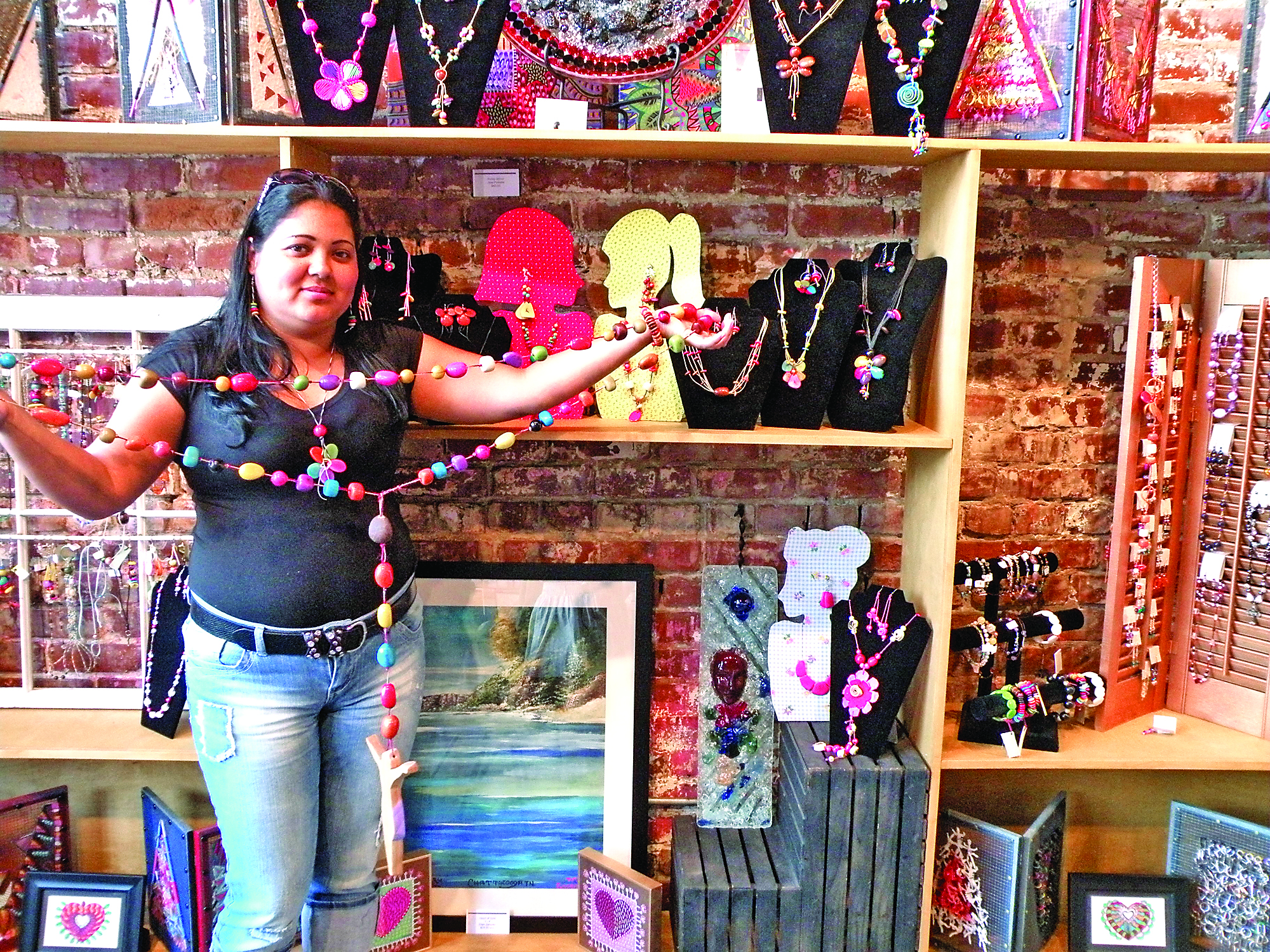While living for a year as a refugee in Cuenca, Ecuador, Ayda Castro learned the art form that would earn her a living once placed in the United States.
Castro left her native Colombia two and a half years ago for political reasons. Upon moving to Ecuador, she learned from a friend how to make jewelry using tagua seeds.
When sliced, the seeds of tagua palms, which are very plentiful in the Amazon region, resemble ivory.
"The process is all-natural and does not contaminate [the air]," said Castro, as opposed to plastic beads, which produce pollution during the molding process.
She orders the tagua from Ecuador ready to be made into jewelry or other items such as keychains, belts and rosaries. Castro said the seeds are available cut in a variety of ways, and she thinks of a design she would like to create before ordering a specific cut.
She said she transforms the naturally ivory-colored beads into a rainbow of shades using food coloring.
Castro also uses other unique materials in her work, including dried and died orange peels.
"While slicing and juicing an orange, when it split I thought it looked like a flower," she said.
Castro has been molding the dried peels into floral shapes to wear as jewelry since she was 9 years old. After washing the peels and adding color, she allows them to dry for three weeks to remove all of the moisture and potential to rot.
Castro was placed in Chattanooga as a refugee last summer and was discovered by Hart Gallery at the local Bridge Refugee Service World Refugee Day.
Her first collection was put on display in September at Hart Gallery on the Southside, which she said is just down the street from her home, where she makes all of her jewelry.
Selling artwork is presently her only way of earning money, as she speaks no English and has therefore had difficulty finding employment.
All of Castro's pieces are currently discounted by 25 percent in order to make room for her new collection.
She said she never makes the same piece twice, and in the future she is considering working with new materials, such as different types of rock, as well as incorporating new methods such as stitching.
Castro said she also creates custom pieces, which can be ordered through the gallery.
